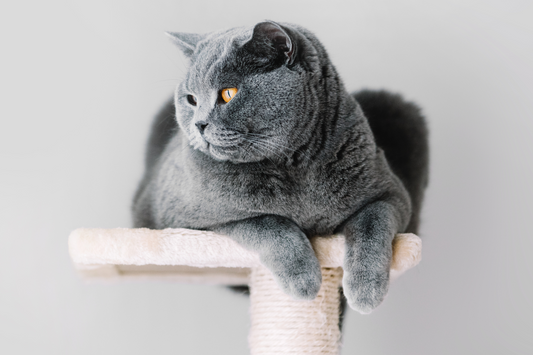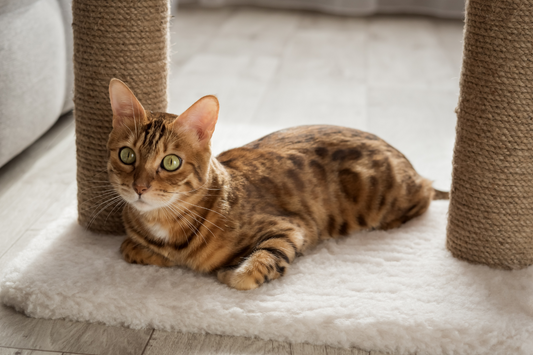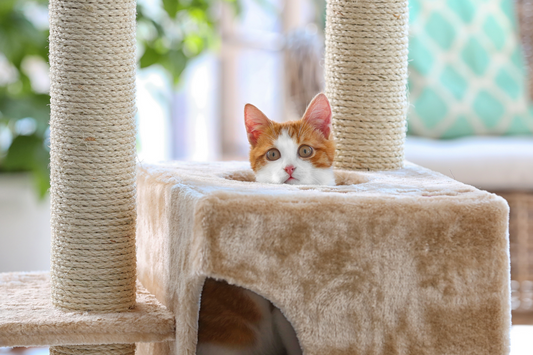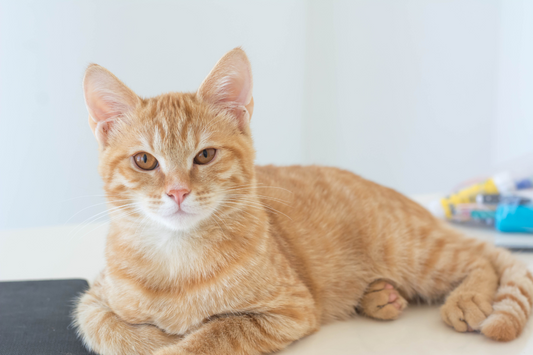
You shopped around, read reviews, maybe even picked the one with sisal, carpet, or cardboard. You placed it right in the living room, and nothing. Your cat walks right past it, heading for your couch arm or that brand-new rug. Sound familiar?
Many pet parents find themselves frustrated when their cats ignore the scratchers meant to save their furniture. But before you toss the scratcher out or assume your cat is just “difficult,” let’s explore the real reasons behind this behavior—and what you can do to change it.
Why Cats Scratch (and Why They Might Avoid Scratchers)
Scratching is instinctive. Cats scratch to stretch, mark territory, and keep their claws healthy. But just because the urge is natural doesn’t mean they’ll automatically use every scratcher you bring home.
Some common reasons cats avoid scratchers include:
1. Wrong texture – Not all cats like the same material. Some prefer soft carpet, while others go wild for coarse sisal or cardboard.
2. Poor placement – If the scratcher is tucked in a quiet corner no one visits, it won’t attract attention.
3. Scent aversion – Strange or factory smells on new products can be off-putting.
4. Habitual behavior – If they’ve scratched the couch for years, that’s what they’ll return to.
Understanding the “why” is the first step to solving the problem.
Common Mistakes Pet Parents Make
It’s easy to assume the cat is being picky or stubborn, but often the issue comes down to simple human missteps. Placing the scratcher in the wrong spot, failing to introduce it properly, or choosing a one-size-fits-all design are typical errors.
Another major mistake? Not rewarding or reinforcing good behavior. Cats thrive on consistency and subtle positive cues. If you’re only reacting when they scratch your furniture—but not when they use the scratcher—they won’t associate the scratcher with anything meaningful.
How to Make a Scratcher More Appealing
If your cat isn’t interested in the scratcher, you’ll need to give it a little “oomph.” Here’s how to turn a boring post into a feline magnet:
Use scent to your advantage: Sprinkle catnip, silvervine, or valerian root on the surface. These natural attractants can transform a dull post into a cat’s favorite spot.
Add motion or play: Attach a dangling toy or rub the post with your cat’s favorite wand. Incorporating playtime creates positive associations.
Make it personal: Rub a cloth on your cat’s cheeks to capture their facial pheromones, then wipe that onto the scratcher. This makes the object feel familiar and safe.
Catch the moment: Redirect your cat mid-scratch when they go for the couch, and gently place their paws on the scratcher. Follow up with praise or a treat if they engage.
Placement Tips That Work
Cats often scratch where they spend the most time or near objects that hold emotional significance (like your couch or bed). If your scratcher is in the hallway no one uses, it won’t get touched.
Try placing the scratcher:
Near favorite sleeping spots – Cats love a good stretch and scratch after napping.
In social zones – Living rooms, near windows, or along walking paths.
Close the problem areas – Put it right next to that spot on the sofa they love.
And remember: some cats prefer vertical posts while others love horizontal pads. Try both styles to see what sticks.
Choosing the Right Material and Style
Not all scratchers are created equal. Here’s how to pick the best one for your cat’s preferences:
1. Sisal rope or fabric – Durable and great for cats who like to dig in.
2. Cardboard – Often budget-friendly and satisfying to scratch, though less durable.
3. Carpeted options – Soft and cozy, but can be confusing if your cat also scratches rugs.
4. Wood or rough surfaces – Mimic outdoor textures some cats love.
The structure matters too. Some cats love tall towers they can stretch on, while others prefer wide, low platforms. Watch how your cat interacts with different furniture or posts to learn their style.
Conclusion: Patience Pays Off
If your cat is ignoring the scratcher, it’s not the end of the world—or your furniture. With a little patience, some trial and error, and thoughtful adjustments, you can turn that unused scratcher into a beloved outlet for your kitty’s instincts.
Every cat is unique, but with consistent effort, the right placement, attractive scents, and proper encouragement, most cats can be gently guided to love their scratcher. Don’t give up—your furniture (and your cat) will thank you.











